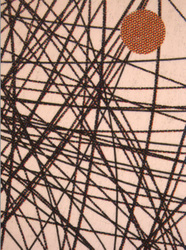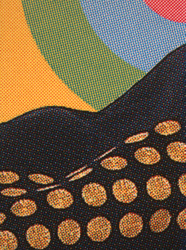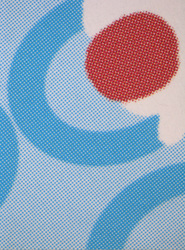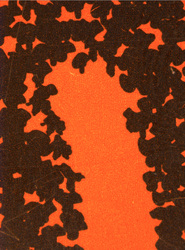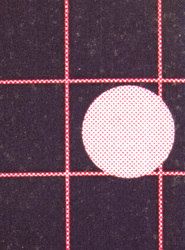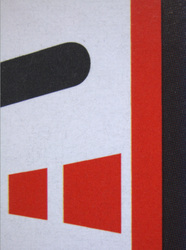ARTISTS REPRESENTED
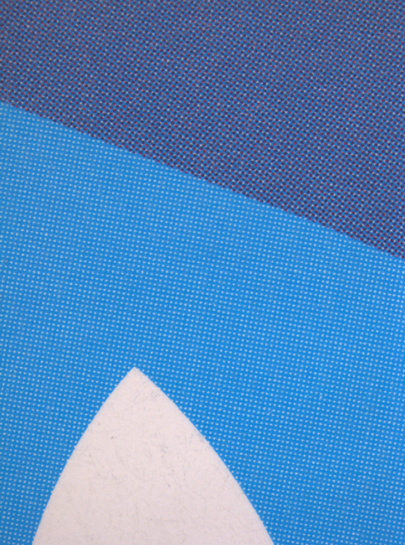
DMITRY SOKOLENKO
The work of Dmitry Sokolenko is based on the principle of topology and fractality. He uses historical photographic processes to investigate abstract art and its underlying semantic structures. Sokolenko wants to take abstract art to another level, one, which is not imbued with the classic subscriptions to modern art parlance. Rather, he sees a different possibility for visual language, which brings into account the semantic field of shared knowledge between creator and spectator. The aim for Sokolenko is to re-introduce imagery as a readable language.
The viewer is introduced to Dmitry Sokolenko’s work through a set of abstract visual signs. Not created from an artist’s emotive approach, but rather a scientific one. He has a long-standing fascination with the works of Vladimir Nabokov and his studies into entomology and especially the study of butterfly wings. Sokolenko’s reading and interpretation of visual signage is pragmatic, investigative and inquisitive. Nabokov’s research, among others, have left him with a wealth of opportunity to converse through the language of visual semantics. The results are startling tropes and images from the ‘real’, excavated from the post mortem of mechanical reproduction, but which to some may broadcast as specters of the imagined.
Dmitry Sokolenko does not subscribe to the artistic autonomy that most practitioners refer to. Instead he takes a contrarian approach to artistic license, if not an absurdist one. He underscores his disassociation with being called an artist all together.
This brings his works closer to that of the early Soviet revolutionary avant-garde and one can find close relationships between Sokolenko’s practise and that of absurdist poetry, say, from writers such as Alexander Vvedensky, who challenged the very fabric of language and it’s limitations in service of production. Sokolenko’s works offer a re-boot in the thought process that everything that makes up the human experience are reduced to a set of signs and impulses from the real. That there is a commonly shared ground, which offers its visual signs as pure experience.
Dmitry Sokolenko was born in 197X.
He obtained a diploma in Microbiology, specialising as a bio-technical engineer in 1999.
2012 will mark the end of his attempts to plant a tree on the White House lawn.
He died in 2014 in the USA, during the Winter Olympics.
For more information about Dmitry Sokolenko and to obtain a full list of works, please contact the gallery.
More on Dmitry Sokolenko HERE
The work of Dmitry Sokolenko is based on the principle of topology and fractality. He uses historical photographic processes to investigate abstract art and its underlying semantic structures. Sokolenko wants to take abstract art to another level, one, which is not imbued with the classic subscriptions to modern art parlance. Rather, he sees a different possibility for visual language, which brings into account the semantic field of shared knowledge between creator and spectator. The aim for Sokolenko is to re-introduce imagery as a readable language.
The viewer is introduced to Dmitry Sokolenko’s work through a set of abstract visual signs. Not created from an artist’s emotive approach, but rather a scientific one. He has a long-standing fascination with the works of Vladimir Nabokov and his studies into entomology and especially the study of butterfly wings. Sokolenko’s reading and interpretation of visual signage is pragmatic, investigative and inquisitive. Nabokov’s research, among others, have left him with a wealth of opportunity to converse through the language of visual semantics. The results are startling tropes and images from the ‘real’, excavated from the post mortem of mechanical reproduction, but which to some may broadcast as specters of the imagined.
Dmitry Sokolenko does not subscribe to the artistic autonomy that most practitioners refer to. Instead he takes a contrarian approach to artistic license, if not an absurdist one. He underscores his disassociation with being called an artist all together.
This brings his works closer to that of the early Soviet revolutionary avant-garde and one can find close relationships between Sokolenko’s practise and that of absurdist poetry, say, from writers such as Alexander Vvedensky, who challenged the very fabric of language and it’s limitations in service of production. Sokolenko’s works offer a re-boot in the thought process that everything that makes up the human experience are reduced to a set of signs and impulses from the real. That there is a commonly shared ground, which offers its visual signs as pure experience.
Dmitry Sokolenko was born in 197X.
He obtained a diploma in Microbiology, specialising as a bio-technical engineer in 1999.
2012 will mark the end of his attempts to plant a tree on the White House lawn.
He died in 2014 in the USA, during the Winter Olympics.
For more information about Dmitry Sokolenko and to obtain a full list of works, please contact the gallery.
More on Dmitry Sokolenko HERE
